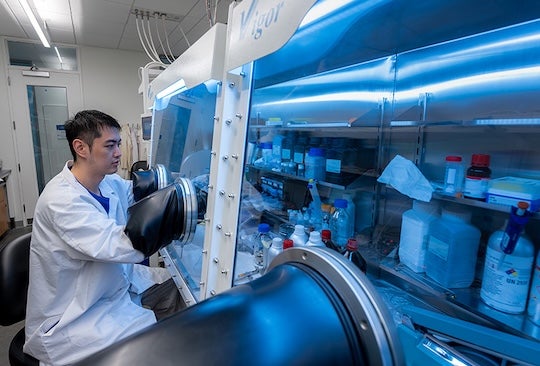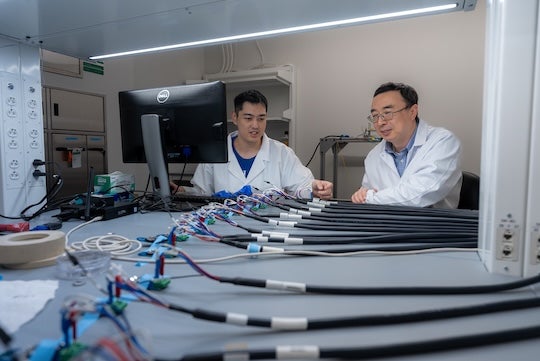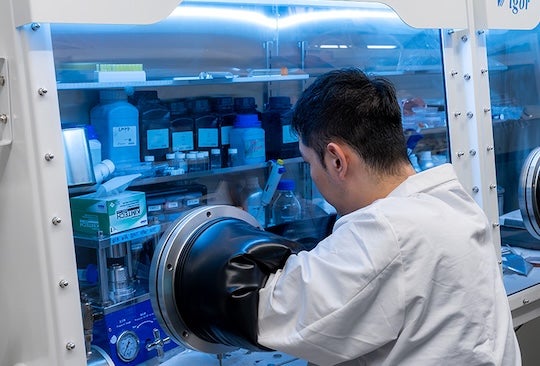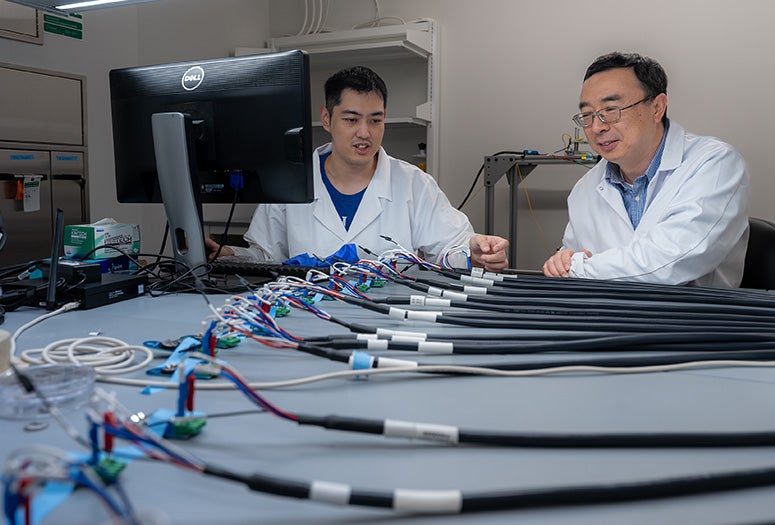Thicker battery electrodes pack in more active materials, promising higher energy density. However, when it comes to lithium-ion battery performance, electrode materials’ thermodynamic properties matter more than their structural design.

A team of Rice University researchers led by materials scientist Ming Tang showed that even if the materials used in thick battery electrodes have nearly identical structures, their internal chemistry impacts energy flow ⎯ and, hence, performance ⎯ differently. This finding goes against conventional wisdom in the field, which holds that creating pore channels in the electrode material via different patterning techniques could mitigate poor reaction uniformity.
“‘Thick’ battery electrodes store more energy, which is great for longer phone life or electric car charge but struggle to charge and discharge quickly due to limited usable capacity,” said Zeyuan Li, a Rice doctoral alumnus and first author on the study. “Imagine trying to fill a thick sponge evenly with water, but the water only rushes into a portion of the sponge, leaving the rest dry ⎯ that is the problem with ‘thick’ electrodes.”
According to a study published in Advanced Materials, the researchers compared two common lithium-ion battery electrode materials ⎯ lithium iron phosphate (LFP) and a nickel manganese cobalt oxide blend known as NMC ⎯ showing the latter performs better despite similar structural characteristics.

“We found that LFP electrodes degraded faster than NMC when tested under identical cycling conditions with more internal cracking and capacity loss due to lopsided lithium flow,” said Li, who now works as a research assistant in the Mesoscale Materials Science Group led by Tang. “If uneven flow was only about pore channels’ dimensions and layout, the electrodes should behave similarly.”
Using high-resolution X-ray imaging at Brookhaven National Laboratory, the researchers tracked where lithium ions traveled inside each electrode during use. The LFP electrodes showed strong reaction “hot spots” near the surface facing the separator — the permeable membrane between a battery’s cathode and anode — while deeper regions remained largely inactive. That unevenness persisted even after resting the battery. In contrast, NMC electrodes had much more balanced reaction profiles.
“We found that the thermodynamic properties of the material dictate how the reaction spreads,” said Tang, associate professor of materials science and nanoengineering at Rice and a corresponding author on the study. “This gives us new insight into battery design and will hopefully play a role in improving efficiencies for thick battery electrodes.”

The findings prompted the team to develop a new metric called the “reaction uniformity number” to help engineers evaluate how well a battery material will perform in thick electrodes. The number captures both structural and thermodynamic factors that influence reaction behavior.
“Batteries that wear out unevenly die faster and waste precious storage capacity,” said Tang, who is also a member of the Rice Advanced Materials Institute. “This discovery provides engineers with new guidance to pick the right recipe in terms of material, microstructure, geometry, etc., for improving thick electrodes’ performance.”
The research was supported by Shell International Exploration and Production Inc., the U.S. Department of Energy (DE-SC0019111, DE-EE0006250, DE-AC02-98CH10886), the National Science Foundation (1626418) and the University of Texas. The content herein is solely the responsibility of the authors and does not necessarily represent the official views of the funding organizations and institutions.
- Peer-reviewed paper:
-
Probing the Effect of Electrode Thermodynamics on Reaction Heterogeneity in Thick Battery Electrodes | Advanced Materials | DOI: 10.1002/adma.202502299
Authors: Zeyuan Li, Fan Wang, Yuan Gao, Hongxuan Wang, Zhaoshun Wang, Yang Yang, Qing Ai, Mingyuan Ge, Yangtao Liu, Matthew Meyer, Tanguy Terlier, Xianghui Xiao, Wah-Keat Lee, Yan Wang, Jun Lou, Andrew Kiss, Harsh Agarwal, Ryan Stephens and Ming Tang
https://doi.org/10.1002/adma.202502299

